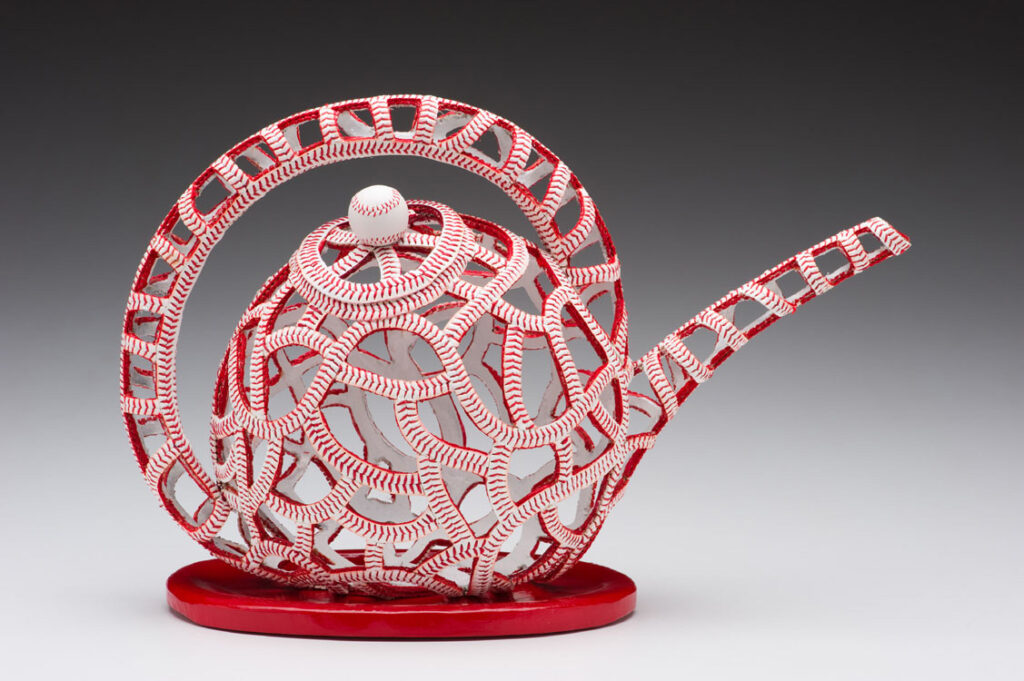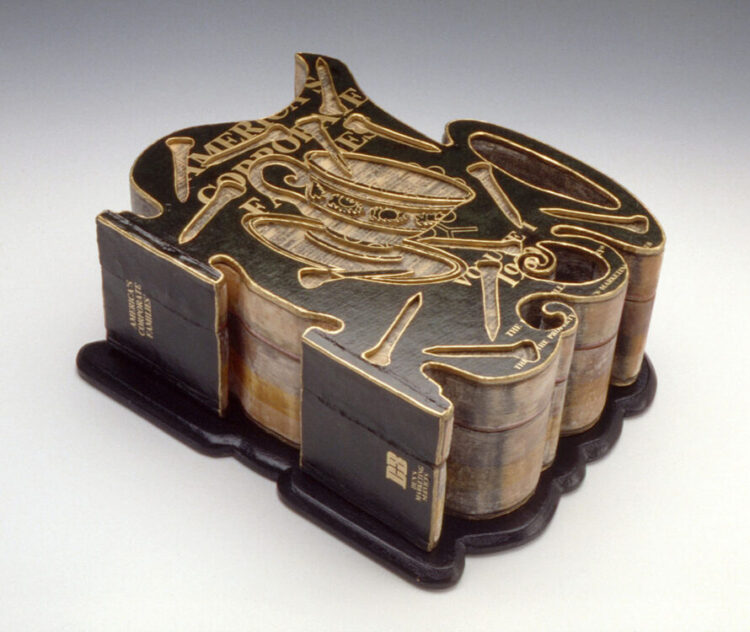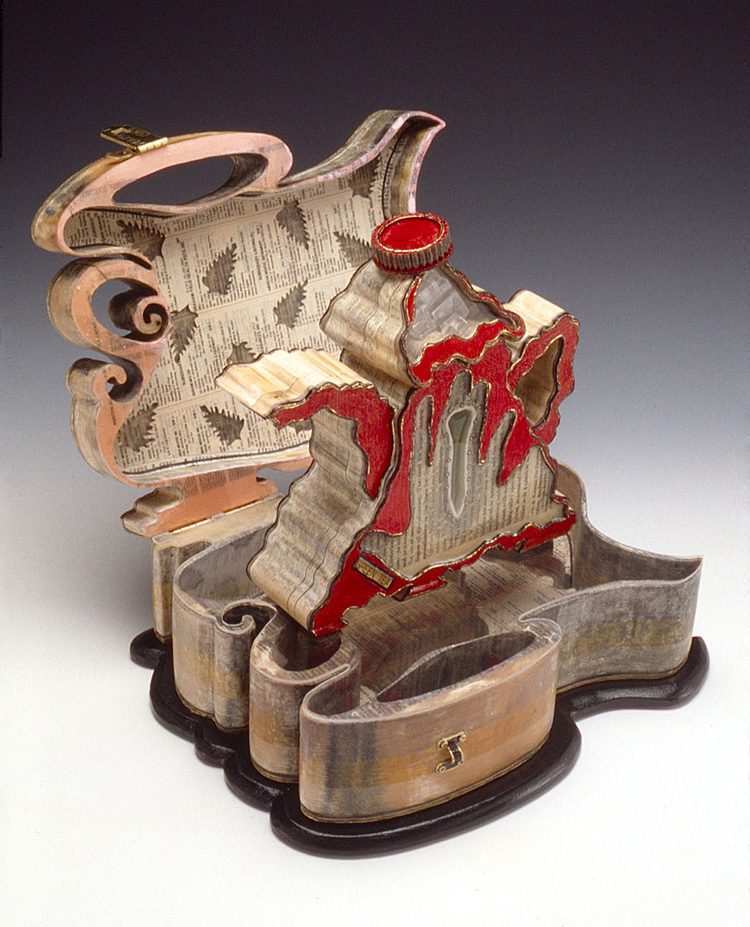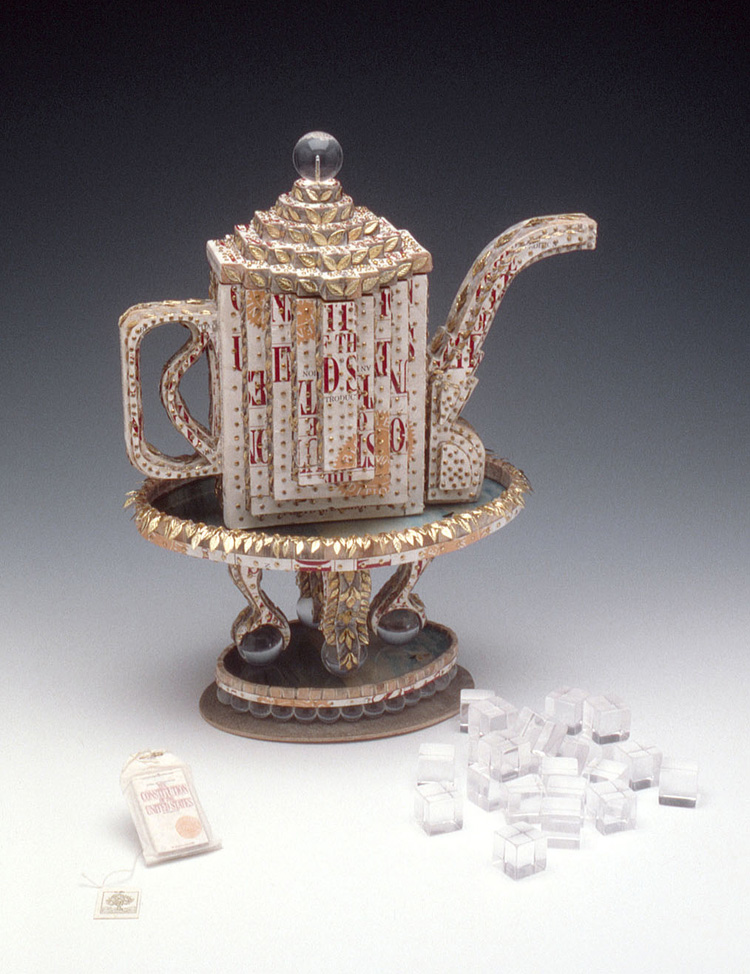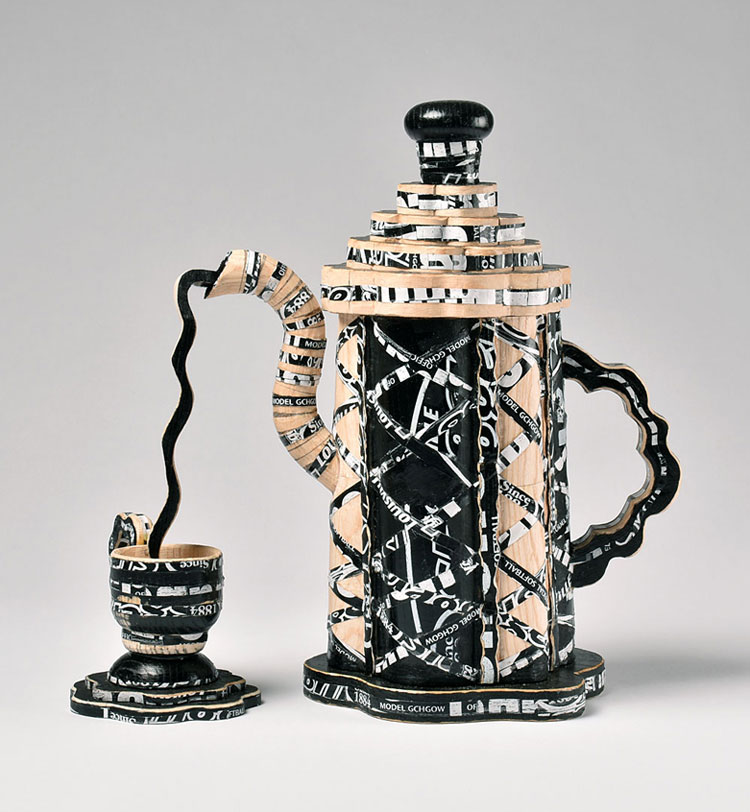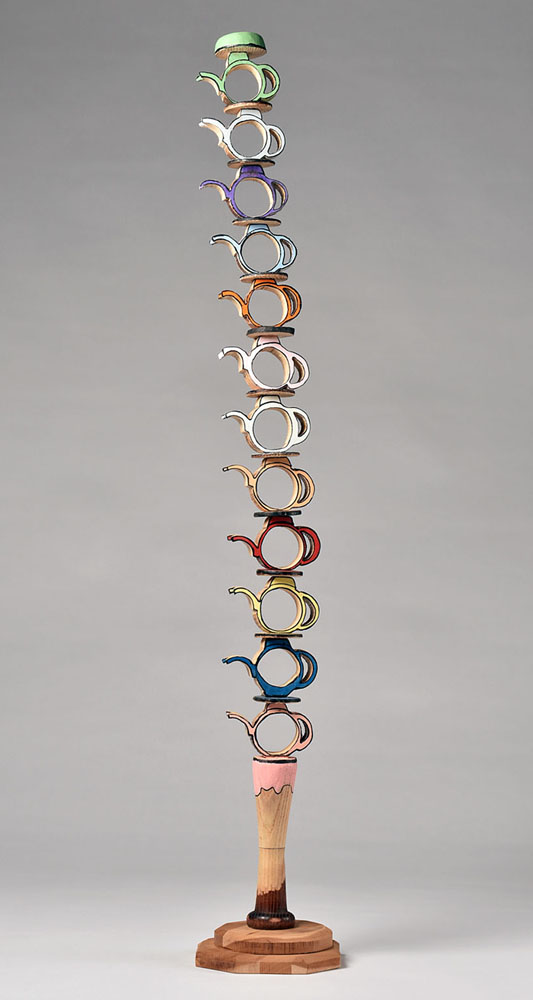“My work describes the nature of what I know about humanness. It incorporates both destruction and construction. It begins with a mental notion and evolves through physical discovery. The result is a form I could have never imagined.”[i] -Margaret Wharton
American artist Margaret Wharton (1943-2014) was an influential figure in the Chicago art scene. She is known for her sculpture that “reimagined everyday objects.”[ii] These creations can be “whimsical, witty, or simply thought-provoking in reflecting [Wharton’s] vision of the world.”[iii] For many years she worked with a simple kitchen chair. These wooden chairs would be deconstructed, reassembled, and skillfully transformed into sculptures that can be “directly analytical” or even feel anthropomorphic in nature.[iv] Throughout Wharton’s career, she applied this perspicacity and skill to a range of other objects, all of which “magically” take on a “new identity and meaning”[v]
The Kamm Teapot Foundation has five works by Wharton in its collection. These examples utilize a range of items from books to baseball bats which she reconstructed into teapots or teapot-related forms. For this blog post we will take a closer look at Wharton and her ingenious sculpture made from ordinary objects.
FOUNDATIONS
Since childhood Wharton had wanted to “make things.”[vi] Over the course of her life this desire motivated her to explore different materials and pursue a life-long interest in the arts. Initially, she received a Bachelor of Science degree in advertising from the University of Maryland.[vii] Wharton felt this “practical side of art” had a lasting impact.[viii] In essence, this background made her always cognizant of the viewer. Even later in her career, Wharton wanted her sculpture “to be accessible to the spectator regardless of age, level of education, or culture.”[ix]
After college Wharton found herself living in Bethlehem, Pennsylvania which was the home of Bethlehem Steel. As she passed by the steel yards a growing interest in the material developed. In 1967 Wharton took her first welding class at a nearby college. “[She] was captivated by steel.”[x] Wharton maintained this interest as she started a family and juggled a busy family life. She would often retreat to the basement of her house where she would weld washers and nails together to make spider-like shapes.[xi]
In 1969 Wharton moved to Chicago, Illinois. In the Windy City she became involved in the women’s movement. This was very important to Wharton’s “progress as an artist.”[xii] Like many women at that time, the women’s movement led her to “redirect [her life] to allow for more personal growth.”[xiii] For Wharton, this meant going back to school. By 1971 she was working towards a Master of Fine Arts in sculpture at the School of the Art Institute of Chicago. Many of her teachers were active in the city’s vibrant 1960s art scene or were associated with the Chicago Imagists movement. These individuals encouraged Wharton’s artistic vision. When she completed her degree four years later she had expanded her knowledge of materials making “bodies of work in metal, plexiglass, seaweed, window screen, multi-materials for body adornment, and finally sculpture abstracted from wooden chairs.”[xiv] These creations reveal the influence of such artists as Marcel Duchamp, Claes Oldenburg, and even Lucas Samaras. Also, while in graduate school Wharton joined a group of women who were founding a cooperative gallery called Artemisia. This experience proved to be a “great learning tool” since they had to install their own work, produce exhibition announcements, and do publicity themselves.[xv]
KAMM COLLECTION
The Wharton works in the Kamm Collection are: Mint Tea (1998), Caddy (2000), Tee-Pot (2009), Leaning Tower of Teapots (2010), and Teapot (2011). Each of these pieces were acquired from the Jean Albano Gallery in Chicago. The group illustrates not only Wharton’s mastery of materials, but also that ever present “investigative spirit” evident in all of her artwork.[xvi]
After focusing on chairs for many years, Wharton began an in-depth exploration of books. Using the same destruction and construction methods, Wharton created intricate pieces such as Mint Tea and Caddy. These books provided an opportunity to study “language…and the relationships between the word and the object.”[xvii] In addition these works gave Wharton a chance, frequently in a witty way, to take “jabs at authority and the art historical cannon.”[xviii] Often these humorous digs can be found in the titles of her sculptures which are intrinsically linked to the books she used in their creation. For example, Mint Tea was crafted from the text, History of the Constitution of the United States and Caddy utilized a bound copy of America’s Corporate Families.
A description of Wharton’s studio from 1995 presents a vivid picture of how important different found objects were to her. She had converted the garage of her quiet suburban home outside of Chicago into a studio space. There, she had “to [wend] her way through masses of materials.”[xix] This scene does remind one of the artist Joseph Cornell whose basement studio has been called a “labyrinth” of tens of thousands of collected items.[xx] With this imagery in mind, it is easy to see Wharton accumulating baseball bats and balls to utilize in future sculptures such as Tee-Pot, Leaning Tower of Teapots, or Teapot. Among this group Tee-Pot is a particularly remarkable sculpture. Wharton adeptly fabricated it out of red and white baseball cover seams. The work contains a spherical open framework, long tubular spout, and an over-arching handle. For the finial Wharton added a miniature baseball.
While researching Wharton for this blog post, an article in the Chicago Reader left an impression. This might be helpful when contemplating the pieces in the Kamm Collection. The writer, Fred Camper, says that observers suggested to him that when studying Wharton’s work, you are supposed to construct your own narrative. However, he felt that her sculpture “[raised] as many questions as they answer.”[xxi] In response to this, Jean Albano, the owner of Jean Albano Gallery who continues to represent Wharton today, stated that she most likely “was thinking about 20 things at once, and often all 20 wind up in the piece.”[xxii]
Further Reading/Viewing:
Jacob, Mary Jane. Margaret Wharton, Chicago. Chicago, IL: Museum of Contemporary Art, Chicago. 1981.
Museum of Contemporary Art Chicago
Notes:

